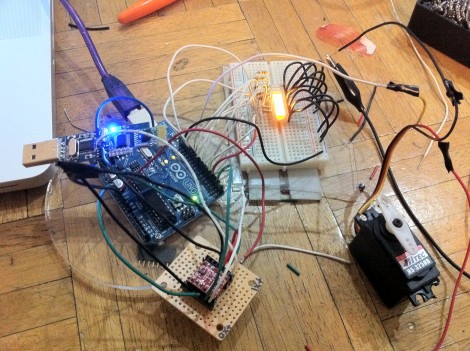iPad2 combination case

[Jasn] wasn’t happy with Apple’s version of the iPad2 case, but an InCase Magazine Jacket didn’t meet his needs either. He broke the two apart and combined pieces of each to achieve his perfect tablet enclosure.
MIDI power tools

Enjoy the sounds of working in the shop thanks to [ArcAttack’s] MIDI controlled power tool performance. Our favorite part’s the outlet box stuffed with cords. [Thanks Ross]
Labeling cables

When we saw [László’s] tip about labeling cables we though “duh, we’ve been doing that for years”. But then we realized to this technique might be new to some folks. So haters gonna hate, but get out some tape and a marker to make your cord mess a bit more tidy.

The folks that run Facebook set out to build their own server farms in order to save money on both materials and electricity. They’ve open sourced the hardware and there’s a bunch of information about the project that we found interesting. [Thanks Wouter]
Manual mute ‘key’ for your netbook

[Randi] wanted a way to ensure he wouldn’t have startup sounds played in class when he booted up his netbook. He came up with this ‘mute key’ that is made from a ground-down headphone plug. He glued a piece of ribbon to it so that it can be removed again. The computer thinks there’s headphone plugged in so no sound plays through the speakers. Since it’s been ground down it’s extra-low-profile, and it’s as cheap as your last broken set of headphones. No link here, [Randi] just emailed us some pictures.
















